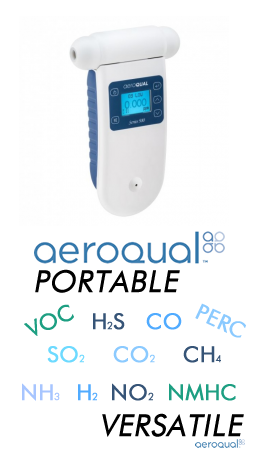Ammonia Information

Ammonia (NH3):
What is Ammonia?:
Ammonia is a nitrogen-based compound. It is colorless but has a noticeably strong smell, even at very low levels. Ammonia is a common nitrogenous waste product and is found in nature from decomposing organic material, animal waste, and even in our solar system. Although ammonia is common in nature and used widely in industry, it is classified as an extremely hazardous substance because it is both caustic and flammable. With a boiling point of -33.34°C at standard pressure, liquid ammonia must be stored under pressure or at very low temperatures. This can be risky as well as ammonia has a tendency to explode under pressure.
|
Chemical Formula |
NH3 |
|
CAS Number |
7664-41-7 |
|
Industry Uses |
Fertilizers, Cleaners, Cooling Systems, Pharmaceuticals |
|
Health Risks |
Irritation to eyes, airway, sinuses, and throat. Neurotoxin and Metabotoxin; Burns and Coughing |
|
Vapor Pressure |
857.3 kPa |
|
Water Solubility |
Soluble |
|
Flammability |
Flammable |
|
Odor |
Pungent; Familiar to many as it is used in smelling salts and household cleaners |
Ammonia Exposures and Health Risks:
Ammonia is found in many household cleaners as well as in most agricultural fertilizers. Cooling and Refrigeration systems have recently started adapting the use of ammonia, and it has also become a large part of the pharmaceutical world. Ammonia, however, is extremely dangerous, even in when exposure is brief and concentrations are small. It is toxic whether inhaled or ingested, which makes it dangerous to aquatic life as well. Ammonia is also an irritant, especially to the eyes, nose, throat, and lungs. Burns and coughing are common side effects of ammonia exposure and contact with the eyes can cause blindness. Ammonia is both a neurotoxin, causing damage to neural tissue and cells, and a metabotoxin, causing various adverse health effects.
Regulations:
The table below summarizes the most-recent exposure limits.
|
Limit/Level |
Type |
Organization |
|
30 ppm |
AEGL-1 (8 hrs) |
EPA |
|
110 ppm |
AEGL-2 (8 hrs) |
EPA |
|
2700 ppm |
AEGL-3 (10 min) |
EPA |
|
390 ppm |
AEGL-3 (8 hrs) |
EPA |
|
25 ppm |
TWA (10 hrs) |
NIOSH |
|
35 ppm |
Short Term Exposure Limit |
NIOSH |
|
50 ppm |
PEL (8 hrs) |
OSHA |
Measuring Ammonia:
Ammonia can be measured in air or in liquid (dissolved) using a variety of methods. The most common method is using Electrochemical Gas Sensors, which is what all of our Ammonia products use. Ammonia is normally measured in parts per million (ppm) for human safety uses but can also be measured in percent by weight for commercial production and storage applications. All of our ammonia monitors measure in ppm.
To see our portable ammonia monitors, click HERE. To see our fixed ammonia monitors, click HERE. To see our liquid (dissolved) ammonia sensors, click HERE.
All of our ammonia products can be found HERE.
What type of Ammonia component are you looking for?
| Fixed Mount | Handheld | Dissolved Kits: | Replacement Sensors: | Calibration Gas: | Rentals: |
 |
 |
 |
 |
 |
 |
All sensors require a yearly calibration to ensure your gas measurements are accurate and performing within manufacturer standards. This page is desiccated to the individual manufacturers we represent and their specific calibration procedures.
**Calibration Service Request Form **
|
Calibration costs do vary, see below to get an estimate: Calibration Fee: $150 Analyzer Calibration Fee: $300 PM Calibration Sensor Fee: $330 Genie Calibration Fee: $265 ATI Calibration Fee: $205 ** note that prices are subject to change per labor and parts required. |
Contact us for help choosing the right Ammonia Sensor for your application


















